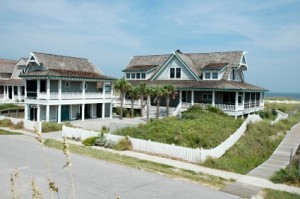Buying homeowner’s insurance can be complicated if you don’t understand how certain risk factors affect policy rates. Some risk factors are easy to overcome while others are not as easy.
The following risk factors can raise red flag for insurance companies causing them to increase the cost of coverage:
Pets
Not every dog is man’s best friend and some insurance companies will even rate you higher for owning a specific breed. If the breed of your dog has a history of violence or is considered as aggressive, insurance companies may rate you up. Some examples are German shepherd, Great Dane, Siberian Husky and pit bull.
Location
As with real estate, the location of your home is extremely important. If you live in an area that is exposed to harsh and hazardous weather conditions, you could pay for it with the cost of insurance.
Fire Concerns
Part of location also deals with proximity to the local fire station and/or fire hydrant. Living too far away from either could increase your insurance rates.
Bad Credit Score
Insurance companies will look to see if a homeowner has a history of paying bills late or on time. A credit check will most likely occur. A lower number could result in a higher premium.
Property Risk Factors
Property risk factors are additional elements found on a homeowner’s property that are considered risky. These typically include trampolines and swimming pools. Many companies won’t extend coverage for these risks, and some will deny coverage although.
For trampolines, it is recommended to install a protection screen around the object and only have one person on it at a time. For swimming pools, almost every insurance company will require a fence surrounding to pool.
Home Maintenance
Similar to health insurance, poor maintenance could result in higher rates. If you take the time to up keep your house, your insurance company may reward you with a lower premium. The opposite is true if you lack general house maintenance, which could ultimately lead to your policy being cancelled.
Claim Frequency
Homeowners who make multiple claims may be viewed as a higher risk and may be charged accordingly.
Home’s Overall Structure
A new home’s overall structure is likely to be in better condition than that of an older home. Therefore, newer homes typically have lower premium rates than older homes. Home construction also comes into play when determining an insurance rate. Homes built from sturdier materials are typically cheaper to insure than homes constructed from soft flammable materials.













